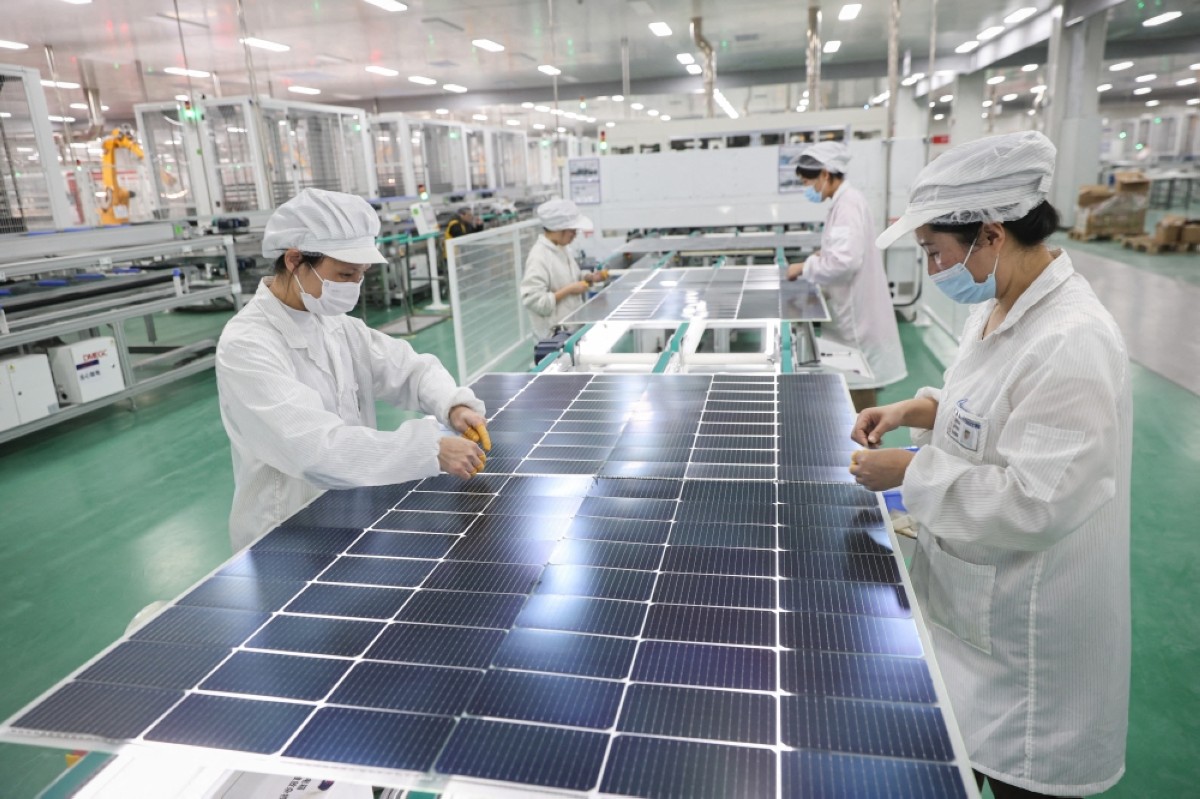China is building two-thirds of wind, solar plants globally
BEIJING: Almost two-thirds of big wind and solar plants under construction globally are in China, where surging renewable capacity has squeezed coal’s generation share to new lows, research released on Thursday showed.

LIANYUNGANG, China: Employees working on solar photovoltaic modules that will be exported at a factory in Lianyungang, in China's eastern Jiangsu province. -- AFP.
China is building 339 gigawatts (GW) of utility-scale wind and solar, or 64 percent of the global total, a report from US-based think tank Global Energy Monitor (GEM) found. That is more than eight times the project pipeline of the second-place US, with 40 GW.
China’s pace puts the global goal to triple renewable capacity by the end of 2030 “well within reach” even without more hydropower, the report’s authors said, calling on China to lift its targets in climate pledges to the UN next year. Beijing is also on track to meet its own 2030 goal to install 1,200 GW of wind and solar by this month - six years early - Sydney-based think tank Climate Energy Finance said last week.
Absorbing the boom in renewables remains a challenge for China’s coal-centered grid and faster development of transmission lines is needed, GEM research analyst Aiqun Yu said. Still, the new capacity pushed renewable generation to record highs recently, according to a separate analysis published by Carbon Brief on Thursday.
China generated 53 percent of its electricity from coal in May, a record low, while a record 44 percent came from non-fossil fuel sources, indicating its carbon emissions may have peaked last year if the trend continues, according to the analysis conducted by Lauri Myllyvirta, senior fellow at Asia Society Policy Institute.
Coal’s share was down from 60 percent in May 2023. Solar rose to 12 percent of power generation in May and wind to 11 percent as China added large amounts of new capacity. Hydropower at 15 percent, nuclear with 5 percent and biomass at 2 percent made up the rest of the non-fossil fuel power. The increased renewable generation led carbon dioxide emissions from the power sector, which make up some 40 percent of China’s overall emissions, to fall 3.6 percent in May.
“If current rapid wind and solar deployment continues, then China’s CO2 output is likely to continue falling, making 2023 the peak year for the country’s emissions,” Myllyvirta wrote.
His analysis found solar power generation soared by a record 78 percent year-on-year in May to 94 terrawatt hours (TWh). Data from China’s National Bureau of Statistics showed a 29 percent increase, but that excluded rooftop solar panels and therefore missed about half of the electricity from solar.
The new analysis calculated wind and solar output using power generating capacity data and utilization figures from the China Electricity Council, an industry association. Wind power generation rose 5 percent on the year to 83 TWh as a 21 percent increase in capacity was offset by lower utilization because of variations in wind conditions. Hydropower generation rose 39 percent from last year, when hydropower was hit by a drought.
Gas-fired generation fell 16 percent, and power generation from coal fell 3.7 percent, even as total electricity demand increased 7.2 percent year-on-year. — AFP.











